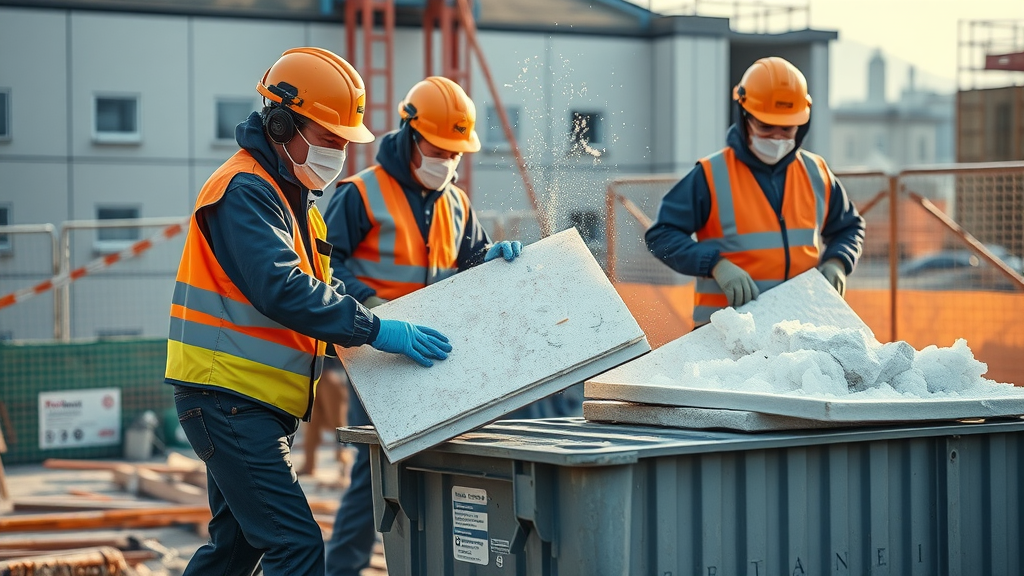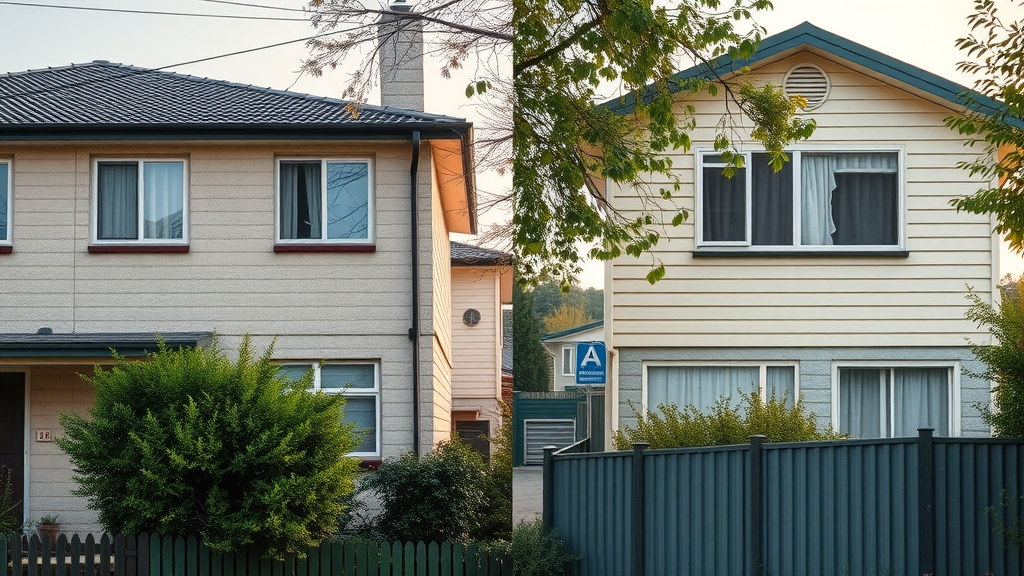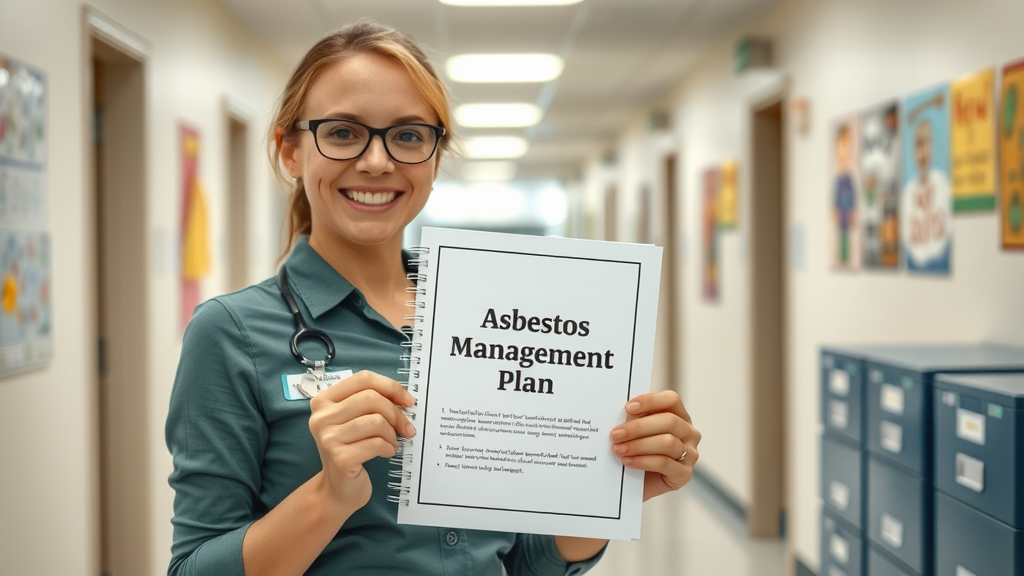Did you know that over 40% of buildings in Newcastle built before 1990 are likely to contain asbestos? This sobering statistic means that most property owners across the city face significant asbestos risk —often without even realising it. Whether you manage a school, office, residential building, or commercial property, an asbestos management plan Newcastle is not just a regulatory checkbox—it's your blueprint for health, safety, and peace of mind. In this detailed guide, you’ll discover why asbestos management matters, how to stay compliant, and the proven strategies for protecting your property and community.
Newcastle’s Hidden Danger: Why Every Property Needs an Asbestos Management Plan
"Did you know that over 40% of buildings in Newcastle built before 1990 are likely to contain asbestos?"

Asbestos may be out of sight, but in Newcastle, it’s far from gone. Many buildings constructed before 1990 feature asbestos-containing material, putting both public health and business operations at risk. These hidden fibers can lead to severe respiratory diseases if disturbed, so prevention is critical. Without a proper asbestos management plan Newcastle , you may unknowingly expose occupants and workers to these persistent health dangers—compliance isn’t just about following the law, it’s about safeguarding lives.
A comprehensive asbestos management plan helps you identify the presence of this hazardous material, implement control measures , and establish ongoing safety and compliance . Whether you manage a school, heritage site, industrial site, or older residential property, baseline protection starts with acknowledging the asbestos risks embedded in Newcastle’s architecture. Addressing these risks head-on is a legal requirement—and a moral imperative—to ensure your property never becomes a hazard zone.
The Ongoing Health Risk of Asbestos Exposure in Newcastle
The health risks linked with asbestos exposure are well documented, making it a primary public health concern across Australia. Inhalation of airborne asbestos fibers can lead to severe conditions such as asbestosis, lung cancer, and mesothelioma—diseases with high rates of mortality and no cure. The delayed onset of symptoms (sometimes decades later) makes risk assessment and routine asbestos surveys all the more critical in older Newcastle properties, where undiscovered asbestos may lurk behind walls, ceilings, or floor tiles.
Periodic risk assessments not only help protect your employees and tenants but are essential for keeping up with evolving safety regulations . Maintaining solid control measures over asbestos management helps reduce the potential for accidental disturbance and exposure. It also supports your compliance with legal requirements —failing to do so can result in fines, lawsuits, and, most importantly, irreversible harm to your community.
Your Asbestos Management Plan Newcastle: Key Components and Legal Requirements
-
Site-specific asbestos survey and assessment
-
Up-to-date asbestos register
-
Comprehensive risk assessment
-
Appointment of a licensed asbestos assessor
-
Control measures for asbestos exposure and safe removal
-
Clear documentation of health and safety protocols
-
Roles and responsibilities under the asbestos management plan
A robust asbestos management plan Newcastle should be tailored to your site, considering the property’s age, construction methods, and historical maintenance. The process starts with a professional asbestos survey to thoroughly identify all asbestos-containing materials (ACM) on-site. Each identified risk is then documented in your asbestos register —a mandatory log that must always be kept up-to-date and accessible for contractors or maintenance staff.
The next step involves a detailed risk assessment of the condition and likelihood of disturbance of each ACM, typically carried out by a licensed asbestos assessor . Control measures must then be implemented based on the risks identified, including safe removal, encapsulation, or clear marking of asbestos locations. The plan also outlines health and safety protocols, emergency procedures, training for employees, and a breakdown of each party’s responsibilities. This is more than a document—it's an active management tool, required by law, that underpins your ongoing commitment to safety and compliance .
Legal Requirements for Asbestos Management Plans in Newcastle
In Newcastle, legal requirements mandate that any workplace or public building constructed before 2004 must have an asbestos management plan in place. Under asbestos regulations like the Control of Asbestos Regulations and relevant State codes, property owners and managers are obligated to actively manage asbestos and clearly document all control measures. Breaching these requirements can result in substantial fines and even criminal prosecution, especially if negligence leads to asbestos exposure or health issues.
The law specifically requires: completion of regular asbestos surveys , the appointment of a licensed asbestos assessor , comprehensive risk assessment , immediate action plans for high-risk ACMs, and clear communication with all staff and visitors. For Newcastle property owners, failure to comply not only puts your business at legal risk but also jeopardizes community health—a responsibility no manager can afford to ignore.
It’s also worth noting that asbestos management plans must evolve with your property—major renovations, new tenants, or maintenance work can all change the asbestos risk profile. Staying proactive and keeping your plan current is essential for ongoing health and safety , as well as meeting every legal requirement set by local authorities and WorkSafe standards.
Understanding Asbestos Surveys & Risk Assessment in Newcastle

A professional asbestos survey is the foundation of any effective asbestos management plan Newcastle. It allows you to accurately identify the presence and location of potentially hazardous asbestos-containing materials throughout your property. These surveys are especially vital for any site built before 1990, though even newer structures can sometimes conceal hidden dangers, particularly if past renovations introduced legacy materials.
The survey involves comprehensive sampling, laboratory analysis, and detailed mapping of ACMs, conducted according to strict safety regulation and control of asbestos guidelines. Importantly, only trained professionals—preferably licensed asbestos assessors —are permitted to perform these surveys due to the associated health risks of disturbing asbestos. With a completed survey, you can then move forward with an informed management plan and begin the ongoing process of risk assessment and mitigation.
What is an Asbestos Survey and Who Needs One?
An asbestos survey is a systematic inspection of a building or site to detect and document all visible and potential instances of asbestos-containing materials. It involves physical investigation, sampling, and laboratory testing, giving property owners an accurate understanding of their unique asbestos risks . According to regulations, nearly every building in Newcastle built prior to 1990—and all commercial workplaces constructed before 2004—must undergo this process, particularly before any renovations or demolition.
Property owners, building managers, workplace supervisors, and even tenants may be legally responsible for arranging an asbestos survey . Without this proactive step, you risk accidental exposure during maintenance or emergencies. A valid survey is also the first requirement when developing a compliant asbestos management plan , so don’t skip this vital assessment—the safety of occupants and workers depends on it.
New tenants or new owners should always request a copy of the most recent survey and asbestos register to confirm that their space is safe from health risk . If no survey exists, schedule one immediately with a licensed asbestos assessor —it’s the only way to ensure your duty of care under Newcastle’s stringent safety regulations.
Conducting Effective Risk Assessment for Asbestos Hazards
A thorough risk assessment evaluates both the current condition of ACMs and the probability they’ll be disturbed during normal operations, cleaning, or repairs. Trained assessors look for signs of damage, deterioration, or previous repairs and determine appropriate control measures for every identified risk. For Newcastle sites with high public footfall—like schools or retail spaces—this step is doubly important for safety and compliance .
The licensed asbestos assessor prioritizes high-risk locations, creates clear labeling, and helps define access controls or removal processes to minimize asbestos exposure . The goal is to remove or contain any material that could realistically pose a danger, preventing airborne contamination at all times. Effective risk assessments are revisited annually—or whenever significant building changes take place—ensuring ongoing legal compliance and the highest standard of health and safety .
Ignoring or underestimating the importance of a risk assessment can lead to severe consequences—both in terms of public health and legal exposure. Every action you take, from hiring an assessor to updating your management plan , plays a crucial role in Newcastle’s collective asbestos management effort.
Asbestos Management and Safe Removal: Licensed Assessor Best Practices
Engaging Licensed Asbestos Assessors in Newcastle
Hiring a licensed asbestos assessor is a legal requirement and your greatest safeguard against mishandling this hidden threat. These professionals are certified, trained, and experienced in identifying, testing, and evaluating the condition of asbestos-containing materials. In Newcastle, only licensed assessors can lawfully conduct surveys for high-risk environments, ensuring that your property meets every safety regulation .
A qualified assessor provides invaluable guidance throughout the asbestos management process—interpreting complex regulations, suggesting tailored control measures, and overseeing high-risk operations like removal or encapsulation. For property owners or managers, utilizing the expertise of licensed asbestos assessors is the best insurance for both legal and health outcomes. Their documentation and risk insights are central to every management plan .
Whether you’re dealing with minor renovation or complete demolition, involve a licensed assessor from the outset to protect your interests and your building’s occupants. Their reports form the evidentiary basis for regulatory audits and are considered the gold standard in safety and compliance .
Steps for Safe Asbestos Removal — Newcastle Standards

Safe removal of ACMs is a meticulous process tightly controlled by Australian law. The removal process begins with notification to WorkSafe and an explicit risk assessment conducted by your licensed asbestos assessor . Only certified removalists are legally permitted to handle or dispose of ACMs—a safeguard meant to minimize airborne fibers and secondary contamination.
The process involves sealing off work zones, using specialized personal protective equipment (PPE), and deploying tools that minimize dust. Contaminated waste is double-bagged and transported as asbestos waste to licensed disposal facilities. Throughout, clear signage and barriers keep unauthorized personnel clear, further reducing public health risks. After removal, post-job air monitoring and surface testing ensure the space is safe to reoccupy—a critical step before signing off your management plan update.
Attempting DIY removal is unsafe and illegal; always rely on trained, licensed professionals for asbestos projects. Their strict adherence to safety and compliance regulations is the only way to completely eliminate asbestos risks from your property.
Developing and Implementing Your Management Plan
Creating a Practical Asbestos Register
The asbestos register is a cornerstone of your management plan Newcastle. This living document records the exact location, type, and condition of all ACMs across your property. It’s updated after every new survey, removal, or disturbance—ensuring contractors, staff, and visitors always have an accurate map of potential health risks .
A standout register will be clearly organized, easy to access both physically and digitally, and linked to site maps or floor plans where feasible. In Newcastle, registers are legal requirements for all commercial and public properties, and must be shown on request to authorities or contractors. Ultimately, a comprehensive asbestos register is the foundation of your property’s ongoing asbestos management .
For multi-building complexes or aging schools, registers should be broken down by building, area, and room to ensure maximum clarity and utility. Up-to-date registers are the backbone of risk-based decision making and are regularly reviewed and improved alongside your wider management plan .
Control Measures and Health and Safety Guidelines
Implementing control measures is the next essential step after identifying asbestos risks . Measures range from restricting access to contaminated zones, posting warning signs, containing or encapsulating asbestos materials, to planning for phased removal projects. Staff training is critical—everyone needs to be aware of what to do and what to avoid near ACMs. In workplaces and schools, regular drills and informational sessions reinforce best practices.
Comprehensive health and safety guidelines ensure minimal disturbance of ACMs and safe handling during emergencies. Emergency response protocols, PPE requirements, and well-defined workflows help prevent accidental exposure. Partnering with local licensed asbestos assessors for ongoing asbestos surveys further protects both compliance and safety standards.
Review guidelines annually, update them after any incident, and communicate changes to all relevant parties. A well-implemented management plan Newcastle adapts to evolving risks—putting your property ahead of both the law and emerging best practice in asbestos management .
|
Comparison of Control Measures for Common Asbestos Risks |
|
|
|
Asbestos Risk Scenario |
Control Measure |
Effectiveness |
|---|---|---|
|
Intact, undamaged ACM in rarely-accessed area |
Sealing and clear signage, update register |
High—minimal risk unless disturbed |
|
Deteriorating ACM in high-traffic area |
Immediate licensed removal, restricted access |
Very high—removal eliminates exposure risk |
|
Renovations involving wall, ceiling, or floor materials |
Contract licensed assessor, comprehensive pre-work survey, use of PPE |
High—reduces incidental exposure |
|
Emergency due to accidental disturbance |
Evacuation, area sealing, urgent notification of authorities, assessment and cleanup by licensed removalist |
High if protocols followed |

Case Studies: Asbestos Management Plan Newcastle in Action
"A robust management plan can prevent costly legal action and protect community health — Team Asbestos Removal Newcastle
Successful Asbestos Removal – Local Examples
Several Newcastle property owners have transformed high-risk buildings into safe, functional spaces through proactive asbestos management. For instance, a prominent school district arranged a comprehensive survey using a licensed asbestos assessor and invested in phased removal over school holidays—minimizing disruption while exceeding compliance requirements. Their well-maintained register and transparent communication with staff and families serve as a model for similar institutions needing to balance education and public health .
Another example comes from a historic commercial building in the city center. Heritage considerations complicated removal, but thanks to detailed risk assessment and creative use of control measures (such as temporary barriers and encapsulation), tenants enjoyed uninterrupted business while work unfolded. Following a full clearance inspection, the business now touts its health and safety leadership and strong legal compliance—a powerful draw for future tenants.
These stories underscore that a tailored, responsive management plan makes all the difference in avoiding health hazards, legal headaches, and reputational damage.
Lessons Learned from Poor Management
Unfortunately, not all Newcastle properties have followed best practices. Some DIY renovation attempts have turned simple upgrades into expensive remediation projects and legal quagmires, caused by accidental ACM disturbance. Ignoring safety regulations or letting registers lapse usually prompts regulatory investigations—often triggering business downtime, financial penalties, and even long-term closure.
In one reported instance, a residential complex failed to inform tenants about known asbestos risks, resulting in prolonged ill health, widespread community concern, and formal action from environmental health authorities. The resulting fallout demonstrates the importance of not only creating but also actively maintaining and communicating your asbestos management plan Newcastle .
The clear takeaway: prioritizing asbestos management prevents both physical and financial harm, making it a non-negotiable responsibility.

People Also Ask
What does an asbestos management plan include?
An asbestos management plan includes a current asbestos register, a clear map of ACM locations, risk assessments, control measures, emergency procedures, and roles and responsibilities for staff and contractors. It also mandates scheduled reviews, staff training, and clear documentation for regulatory compliance.
How do you dispose of asbestos in Newcastle?
Disposal of asbestos in Newcastle must be conducted by licensed removalists. ACMs are double-bagged, sealed, and transported to approved asbestos waste facilities. DIY disposal or unlicensed dumping is illegal and dangerous—always use accredited professionals to protect health and comply with local safety regulation.
Where can you find the asbestos management plan in a school?
In schools, the asbestos management plan is typically kept in the administration office or the premises manager’s office. It should be accessible to staff, contractors, or regulatory inspectors upon request, ensuring everyone has up-to-date information on site-specific asbestos risk and safety guidelines.
What is the amp plan for asbestos management?
The AMP, or Asbestos Management Plan, is a mandated written strategy that outlines all procedures for identifying, assessing, managing, and monitoring asbestos risk within a property. It serves as the operational playbook for ongoing safety and compliance .

Best Practices: Review, Communication, and Continuous Improvement
Regular Reviews and Updates of the Asbestos Management Plan
Your management plan is only as good as its last update. Annual reviews ensure the plan remains relevant, reflecting any building changes or lessons learned from incidents. Regular audits and updates are both best practice and a legal requirement for Newcastle properties—especially when renovations, new tenants, or reported health incidents occur.
Forward-thinking property managers also conduct interim reviews after major works or hazard reports to maintain uninterrupted safety and compliance . Stale or outdated plans leave you vulnerable to both health risks and regulatory penalties, making ongoing improvement essential.
Consider using digital tracking tools or calendar reminders to keep your management plan Newcastle current. This culture of continuous assessment not only meets legal benchmarks but also demonstrates your commitment to public health .
Effective Communication and Health and Safety Training
Communication is as crucial as identification in successful asbestos management . All staff, visitors, and contractors must be notified of ACM locations, associated risks, and the existence of your management plan. Information should be communicated proactively, using staff meetings, posters, and accessible registers.
In addition, regular health and safety training keeps everyone aware of safe behaviours and reporting procedures if they notice damage or unmarked ACMs. Drills and refresher sessions improve knowledge retention, reduce anxiety, and strengthen emergency readiness—cornerstones of both legal compliance and community trust.
Mandating that new hires receive induction training about the property’s asbestos hazards is a simple measure that pays dividends for ongoing safety and compliance . Where possible, include your licensed asbestos assessor in planning and delivering training content.
-
Review the asbestos management plan Newcastle annually
-
Notify staff and occupants of any asbestos risks and updates
-
Maintain comprehensive and accessible documentation
Consequences of Non-Compliance with Asbestos Laws in Newcastle
Understanding the Legal Risks and Penalties
The penalties for failing to maintain a compliant asbestos management plan Newcastle are significant. Fines, prosecution, business closure, and even imprisonment can result from willful neglect or failure to prevent asbestos exposure . Newcastle authorities enforce a zero-tolerance approach in cases where health and safety are compromised.
Beyond fines, lawsuits from staff, tenants, or the broader public are increasingly common when exposure leads to illness. Reputation damage often exceeds the initial penalty, as news of non-compliance spreads quickly and erodes community trust. Protecting your organisation with a robust, well-maintained plan is always more cost-effective than dealing with the aftermath of regulatory breaches.
Staying on the right side of the law means working with licensed asbestos assessors , keeping your documentation current, and prioritising safety and compliance in every property decision.
Protecting Your Business and Community Health
By investing in the latest asbestos management methods, you not only meet the letter of the law but also fulfill your duty of care to staff and the wider Newcastle community. Transparent management demonstrates ethical leadership and reassures families, customers, and employees that their health is paramount.
Community protection also means working collaboratively with local authorities, industry associations, and licensed asbestos assessors to share best practices and stay ahead of evolving safety regulation . Businesses that prioritise safety and compliance become trusted partners in the community, making asbestos management an opportunity—not just an obligation.
Prioritizing asbestos safety is both good business and good citizenship. Every step you take, from surveys to transparent communication, contributes to a healthier Newcastle for all.
Common Challenges and How to Overcome Them
Managing Legacy Asbestos in Older Properties
Many of Newcastle’s iconic properties were built when asbestos was the material of choice for strength and insulation. These legacy issues present unique challenges—hidden ACMs behind walls, beneath floors, or above ceilings make identification and ongoing management more complex than with newer structures. Deterioration over decades can increase both the risk of exposure and the intricacy of safe removal.
Overcoming these challenges starts with comprehensive surveys, meticulous documentation, and creative control measures such as encapsulation or phased removal. Preservation considerations for heritage buildings add another layer of complexity. Working with experienced, licensed asbestos assessors ensures recommendations that blend safety, compliance, and respect for historical value, making it possible to modernize spaces without sacrificing their legacy.
Education and planning are central—training every occupant and contractor to recognize ACMs and report potential hazards prevents accidental disturbance and keeps your plan responsive to new risks.
Budgeting for Asbestos Removal in Newcastle
Cost is often cited as a barrier to effective asbestos management , particularly for older and larger properties. Upfront investment in surveys, assessments, and safe removal can appear daunting, but the long-term financial and legal risks of postponement far outweigh the initial outlay. Budgeting smartly means prioritizing high-risk areas first, phasing removal over multiple years, and exploring grants or government incentives where available.
Working with reputable contractors and licensed asbestos assessors provides clearer pricing and helps avoid the hidden costs of emergency responses to accidental exposures or regulatory fines. Strategic budgeting, continuous engagement with authorities, and transparent communication with stakeholders all contribute to successful, affordable asbestos management over the property’s lifespan.
Remember, inaction is never cheaper—be proactive, seek professional support, and view asbestos management as an essential property investment.
Frequently Asked Questions
-
Who is responsible for creating an asbestos management plan Newcastle?
The duty typically falls to the property owner, landlord, or workplace manager. For schools, this is often the principal or the building manager. All are responsible for ensuring compliance with Newcastle regulations. -
How often should an asbestos survey be repeated?
Asbestos surveys should be conducted at least every 12 months or whenever there is a significant change—such as renovation, damage, or tenant change—to confirm the continued safety of ACMs and update the asbestos register accordingly. -
What qualifications should a licensed asbestos assessor have?
A licensed asbestos assessor in Newcastle must be accredited, trained in risk assessment, and certified by the local authority or a recognised national body. Always verify credentials before hiring. -
Can property owners remove asbestos themselves?
No. Only licensed asbestos removalists are legally allowed to handle or dispose of asbestos in Newcastle. Attempting removal yourself is illegal and poses significant health risks. -
What should I do if I suspect asbestos exposure?
Evacuate the area, avoid disturbing dust or debris, and immediately notify building management. Seek medical advice if you believe you have been exposed, and arrange for a licensed asbestos assessor to inspect and manage the risk.
Key Insights for Newcastle Property Owners and Managers
-
Every building built before 1990 in Newcastle is a candidate for an asbestos management plan
-
Regular risk assessment is legally required
-
Investing in a professional asbestos survey prevents legal liability
Summary – Why Choose a Professional Asbestos Management Plan Newcastle
"The health and safety of your community depend on effective asbestos management and strict adherence to Newcastle regulations."
Strong asbestos management safeguards lives, protects your investment, shields you from legal penalties, and builds trust within your community. Don’t cut corners—choose professional support and keep your plan up-to-date.
Take the Next Step: Get Certified Asbestos Support in Newcastle
Ready to protect your property and achieve total compliance? Get Your Asbestos Test Done by Professionals – Call +61 489 263 599 or Click Here to Get a Quote today and ensure your asbestos management plan Newcastle is second to none.
To enhance your understanding of asbestos management in Newcastle, consider exploring the following resources:
-
The City of Newcastle’s official page on asbestos provides comprehensive information on identifying asbestos-containing materials, legal requirements for removal, and safe disposal practices. ( newcastle.nsw.gov.au )
 Add Row
Add Row  Add
Add 




Write A Comment